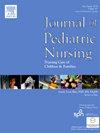Investigation of the relationship between mothers' phubbing behaviors and taking safety precautions for home accidents: A cross-sectional correlational study
IF 2.3
4区 医学
Q2 NURSING
Journal of Pediatric Nursing-Nursing Care of Children & Families
Pub Date : 2025-09-24
DOI:10.1016/j.pedn.2025.08.010
引用次数: 0
Abstract
Objective
To determine the relationship between the safety measures taken by mothers against home accidents and phubbing behavior.
Methods
A cross-sectional study was conducted between March and May 2025. The study was completed with 390 mothers. Mothers with preschool children aged 3–5 years living in Kahramanmaraş province completed the Sociodemographic and Social Support Perception Questionnaire, Scale of Diagnosing the Safety Precautions for Home Accidents of Mothers with 0–6 Age Group Children and the Generic Scale of Phubbing (GSP). Multivariate regression analysis modeling was applied to test the mediating effect of different sociodemographic and social support questions on the relationship between mothers' phubbing behavior and their safety precautions for home accidents.
Results
The mean age of the mothers included in the study was 36.51 ± 5.78 years. Analysis identified a significant strong negative correlation between mothers' phubbing behavior and the safety measures they took to counter home accidents. In the regression model mothers' employment status, receiving support for child care (financial and support from friends, neighbors, caregivers, etc.) and nomophobia, one of the GSP sub-dimensions, explained 78.1 % of their behavior when taking safety measures against home accidents (p < 0.001).
Conclusion
These results suggest that parents' phubbing behavior may increase the likelihood of children having home accidents.
Implications to practice
Pediatric nurses can provide interventions to reduce mothers' nomophobia and contribute to changing families' phubbing behaviors.
母亲低头行为与家庭事故安全防范关系的横断面相关研究。
目的:探讨母亲对家庭事故采取的安全措施与低头行为的关系。方法:于2025年3月至5月进行横断面研究。这项研究是在390名母亲中完成的。kahramanmaraku省3-5岁学龄前儿童的母亲完成了社会人口学和社会支持感知问卷、0-6岁儿童母亲家庭事故安全防范诊断量表和恐惧症一般量表(GSP)。采用多元回归分析模型检验不同社会人口学和社会支持问题对母亲低头行为与家庭事故安全防范之间关系的中介作用。结果:本组产妇的平均年龄为36.51±5.78岁。分析发现,母亲的低头行为与她们为应对家庭事故所采取的安全措施之间存在显著的强烈负相关。在回归模型中,母亲的就业状况、育儿支持(经济支持和来自朋友、邻居、照顾者等的支持)和无恐惧症(GSP子维度之一)解释了78.1%的母亲在采取家庭事故安全措施时的行为(p)。对实践的启示:儿科护士可以提供干预措施,以减少母亲的无恐惧症,并有助于改变家庭的低头行为。
本文章由计算机程序翻译,如有差异,请以英文原文为准。
求助全文
约1分钟内获得全文
求助全文
来源期刊

Journal of Pediatric Nursing-Nursing Care of Children & Families
NURSING-PEDIATRICS
CiteScore
3.70
自引率
8.30%
发文量
291
审稿时长
65 days
期刊介绍:
Official Journal of the Society of Pediatric Nurses and the Pediatric Endocrinology Nursing Society (PENS)
The Journal of Pediatric Nursing: Nursing Care of Children and Families (JPN) is interested in publishing evidence-based practice, quality improvement, theory, and research papers on a variety of topics from US and international authors. JPN is the official journal of the Society of Pediatric Nurses and the Pediatric Endocrinology Nursing Society. Cecily L. Betz, PhD, RN, FAAN is the Founder and Editor in Chief.
Journal content covers the life span from birth to adolescence. Submissions should be pertinent to the nursing care needs of healthy and ill infants, children, and adolescents, addressing their biopsychosocial needs. JPN also features the following regular columns for which authors may submit brief papers: Hot Topics and Technology.
 求助内容:
求助内容: 应助结果提醒方式:
应助结果提醒方式:


